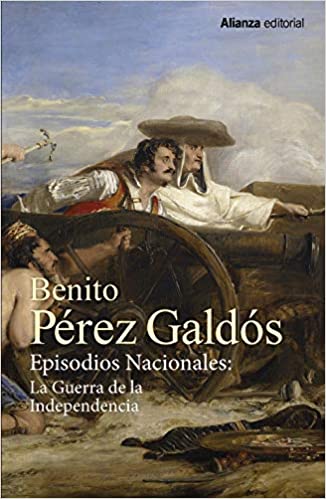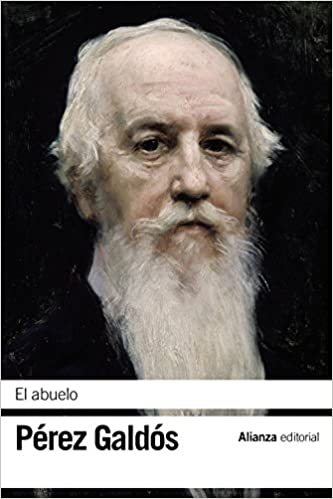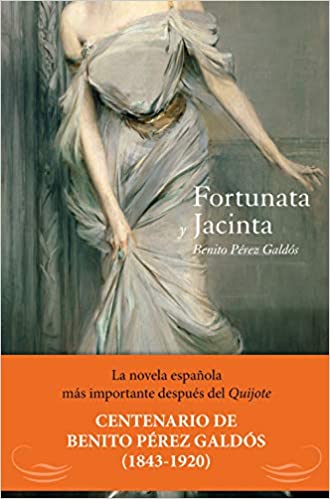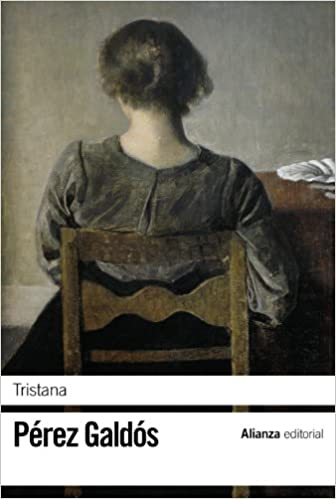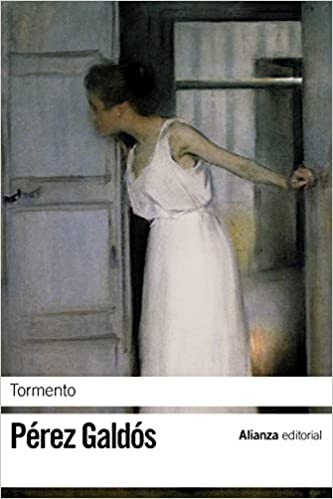Benito Pérez Galdós is more accurate representation of literary journalism or from journalistic literature. His extensive work of fiction delves into manners with an authentic chronicler's style. Lives as reports, fictionalized stories with nuances that constantly know experiences with a stamp of authenticity, ranging from the most existential to the adjustment with the prevailing morality and the individual exposed to the circumstances of the time lived by Pérez Galdós, halfway between the nineteenth centuries. and XX.
Author of one of the most extensive bibliographies of Spanish narrative. A faithful exponent of a realism that, in his case, ends up composing a volume of intrahistories, of characters in which Spanish ideology composes a complete and complex mosaic. Taking a tour of any book by Benito Pérez Galdós soaks you in a nineteenth-century touch on the popular.
The most personal aspects of the author were always a jealously guarded space that still awakens many doubts and diverse interpretations today, especially regarding his singleness until his last days. Politically active and committed to the Republic until its last consequences and also interested in dramaturgy, such as that fascinating materialization of writing that, in the absence of cinema, and probably with a greater sense of pleasure, gave life on stage to many of his proposals.
Perhaps his political side led him to oblivion in his last days, to the point that his funeral was a sober farewell. Although perhaps, why not, deep down he would be satisfied with that goodbye closest to the sad touch of his admired Tolstoy that no to the gloomy pomp of the most solemn and recognized dead of that 1920 in which Spain began to capriciously separate between good and bad ...
3 recommended novels by Benito Pérez Galdós
National episodes
During his life, at different times, Benito Pérez Galdós dedicated himself to rewriting a kind of library of the History of Spain. Small big plots about those relevant episodes of our country, linked by the subjective and magical vision of the author, respectful of what happened but determined to rescue the particular so that it ends up transcending that kind of chronicle of the consequences, of the transcendence of the nuances, of results in the sphere of the people who observe the occurrence of so many and so many provoked circumstances.
Browsing the Internet I found a volume that summarizes all these Episodes collected in its four series of publications. In my opinion, the commendable effort of Benito Pérez Galdós to make this work his great literary testimony, knowing how to build it as the years of his life went by, is a reliable demonstration of what a writer should and can be, someone who He gives his life to writing. It can be about writing the most remote fiction or the closest realism. The point is that a writer is what he is while he writes, while he keeps an idea to develop, while he meditates on how to continue his story. The rest are specific spotlights, presentations and interviews...
El Abuelo
The cinema immortalized the image of Fernando Fernán Gómez as a grandfather so strict as well as endearing. A contradiction achieved from the mimicry with the inner forum of that man, of his experiences and calamities. In its usual realistic touch, we also end up accessing the existential as well as the tragic, up to a kind of theatrical perspective, without over-acting but marked by deep-seated emotions from debts with love, guilt, resentment and the need for reconciliation when already We know that the time we have left is short.
Summary: After the death of his son, Don Rodrigo, the Count of Albrit returns from America to his town in order to discover which of his two granddaughters is the legitimate one. Lucrecia, mother of the two daughters (Dorotea and Leonor) decides to deceive her grandfather by telling him that Dorotea is his granddaughter. The grandfather becomes fond of the girl and then Lucrecia tells him that her granddaughter is really Leonor. The grandfather, finally, learns to love his two granddaughters, forgetting the honor. EL ABUELO belongs to the series of dialogued novels that, denying the traditional scheme of gender distinction, characterizes the last stage of the work of Benito Pérez Galdós.
Fortunata and Jacinta
Very extensive novel, but one that always maintains the dramatic tension in style. Exuberance in form and substance, a balance that is not always easy to achieve. There is an intriguing point that holds the reader's attention intensely at all times. It is a particular intrigue, about worldly characters from wealthy strata, but it remains magnetically powerful. The customs and their contradictions, more notable if possible among the wealthy classes. Living in a city like Madrid is like a heart that ends up beating with every page read.
Summary: Set in Madrid, between December 1869 and April 1876, it collects the story of the legal woman: Jacinta and the lover: Fortunata, of the heir Juanito Santa Cruz, varied from the intimate, individual and collective life, and its reflection in the social conflicts.
Passionate loves run through, the bourgeoisie enriched, idle, happy, conservative their past with 'flawless' habits, the middle classes, who live off their work, and who strive to find accommodation and education, pressured by conflicts, relationship between classes, introducing gatherings in Madrid cafes and a 'practical philosopher': Evaristo Feijoo and the environment of the lower classes, of necessity: the argument of the fourth part focuses on Fortunata and her adultery, resolved in a tragedy of jealousy.
Other interesting books by Benito Pérez Galdós
Tristana
The talent of Benito Pérez Galdós for the creation of characters that is both a social reflection of the Madrid petty bourgeoisie and an acute psychological analysis of the human condition, displayed all its potentialities in "Tristana". The protagonist of the novel tries to rebel against family and social circumstances that prevent her from achieving independence and happiness. Its failure is the sad victory of a sordid and repressive society that reinforces its stability at the cost of submission and destruction of those who seek to rise up against its conventions and dictates.
Tormento
Published in 1884, between El Doctor Centeno and La de Bringas, works with which it offers a sort of triptych, «Tormento» revolves around the figure of Amparo Sánchez Emperador, a timid and unresolved young orphan in whom the feelings and desires of Agustín Caballero - a very rich Indian, made in the harsh and rugged life of the new world and eager to integrate into the society to which he has returned - and Pedro Polo, a rapturous priest with a harsh character who suffocates his lack of vocation.
With the beautiful Amparo as the touchstone, both Polo and Caballero embody the eternal Galdosian struggle between Nature and society, surrounded by a magnificent gallery of secondary characters, such as Felipe Centeno, José Ido del Sagrario, Father Nones and, above all, Rosalía and Francisco Bringas, who give extraordinary liveliness to the story.

